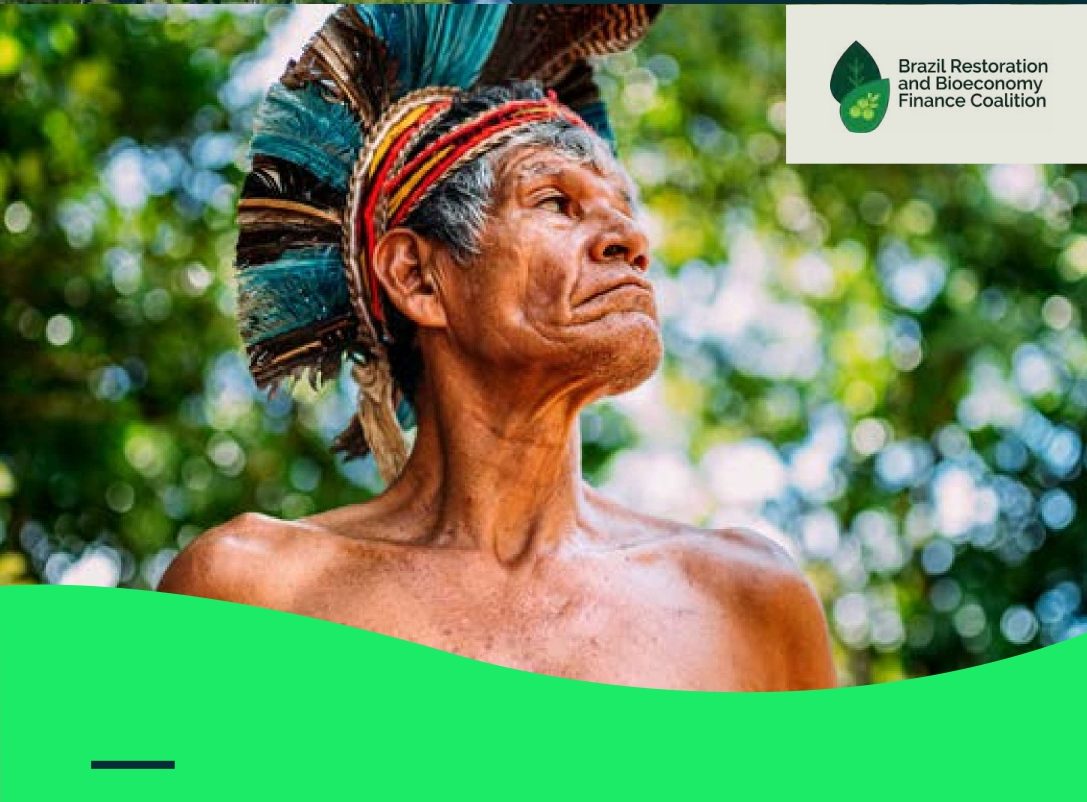The Brazil Coalition for Restoration and Bioeconomy Finance (BRBFC) has just launched the study “Mapping of Indigenous Peoples and Traditional Populations’ Enterprises, Community Funds, and Facilitating Organizations,” an essential guide for investors seeking to direct capital towards community-based bioeconomy in Brazil. The study aims to advance one of the Coalition’s goals: to mobilize at least US$500 million for projects that directly benefit Indigenous populations and local communities.
The study, intended to serve as a guide for Brazilian and foreign investors, identified and analyzed 37 organizations with high socio-environmental and climate impact potential, predominantly located in the Amazon. These initiatives, which include enterprises led by traditional populations (such as quilombolas) and Indigenous peoples, community funds, and facilitating organizations (which strengthen local communities’ capacities and facilitate financial contributions), have investment needs ranging from R$ 100,000 to R$ 300 million per project.
The survey reinforces the need and urgency for adopting climate finance mechanisms for these activities. The ventures of traditional peoples help preserve biodiversity and sustain local communities but need to overcome logistical challenges, increase productive capacity, and qualify labor. “We are talking about effective solutions that already exist and that we want to enhance based on the good results the Coalition has already achieved,” says Karen Oliveira, Director of Public Policy and Government Relations at The Nature Conservancy (TNC). The study was conducted by TNC, in partnership with the Instituto Clima e Sociedade (iCS), both members of the BRB FC.
The research also reminds us that Indigenous and quilombola territories and conservation units are fundamental for carbon capture, as they preserve ecosystems while simultaneously producing. Forests managed by these populations, using traditional and sustainable practices, can capture up to two tons of CO₂ per hectare per year. It’s important to note that, unlike the rest of the world, 73% of Brazil’s emissions come from inadequate land use.
The study concludes that there is a robust network of community-based enterprises, local funds, and facilitating organizations operating in strategic areas for addressing the climate crisis. However, although they have great capacity for adaptation and innovation, these initiatives are limited by a lack of access to financial resources, making the adoption of financial solutions more suited to the reality of these territories and entrepreneurs urgent.
Some priority recommendations for the community finance ecosystem in Brazil are: strengthening existing community funds and encouraging the creation of new ones; establishing long-term financing lines for facilitating organizations; including community enterprises in climate finance strategies; stimulating collaboration networks among funders, community funds, and facilitating organizations; creating emergency financing mechanisms for climate adaptation; and developing innovative and accessible credit instruments.

